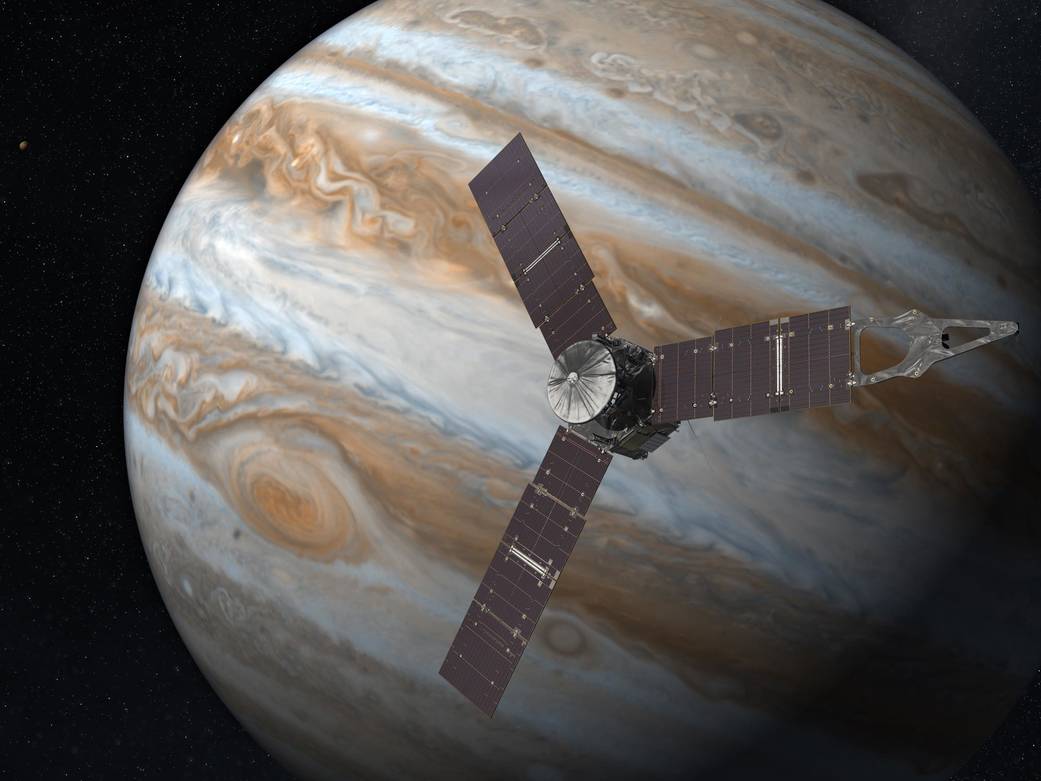Next to Jupiter, Earth is an insignificant speck. The data we have on Jupiter has been supplied by probe flybys, ground-based observations and one orbiter.
Until next week. This coming Monday, July 4th, NASA’s Juno mission will arrive at Jupiter.
Wonder what’s under those clouds? Scientists do too.
The spacecraft will fly 3,000 miles over the top of Jupiter’s clouds.
Scientists hope to get a better understanding of Jupiter’s origin and evolution as well as the formation of gas giant planets. Juno will be inserted into a unique orbit that will allow it to send back the first pictures of Jupiter’s polar regions.
The mission will also teach us about the planet’s core as well as the origin of its magnetosphere. By studying the magnetosphere, which is the product of Jupiter’s magnetic field colliding with the supersonic solar wind, scientists will understand more about how the planet’s magnetic field is formed. The probe’s instruments will uncover mysteries of this giant by studying its gravity and magnetic fields, interior structure, atmosphere, energetic particles and massive auroras.
Built by Coalition founding member Lockheed Martin, Juno is the fastest moving object ever created by humans. It will arrive at Jupiter traveling 40 miles per second! For just over 30 elliptical orbits lasting 14 days each, Juno will observe the giant planet.
Nearly five years ago, Juno set out for the largest planet in our solar system – so big that more than 1,000 Earths would fit inside of it. Jupiter’s atmosphere is primarily composed of hydrogen and helium gas.
There is much more background radiation at Jupiter than there is at Earth. To protect against this extreme radiation, half-inch thick titanium walls shield the spacecraft’s electronics.
The spacecraft is the size of a basketball court. More than five times farther away from the sun than Earth, each of Juno’s solar panels are almost 30 feet long to provide the spacecraft with enough power.
The principal investigator for the mission is Scott Bolton of Southwest Research Institute in San Antonio. NASA’s Jet Propulsion Laboratory (JPL) manages the Juno mission which is part of NASA’s New Frontiers Program.
Click here for an epic video about the mission from JPL.
Learn more about this exciting mission at NASA.gov.




